Intro
Are you bored of struggling with how to install best step ladder, which just seems to take up extra territory that may be very expensive? Or did you struggle at all to find storage space on a stairwell that looked like a warehouse?Enter the solution: the right stair ladder! Stairs are essential portions of equipment which can occupy and experiment with any space. Unlike the ones complicated opposite numbers, a ladder is conceptually powerful,
converting properly into tight storage regions including shelves, sheds, or possibly your car trunk however received’t be fooled you once more through their compact duration— Together with a roof protection or platform to advantage manner. However, earlier than you rush out to shop for one, it’s important to realize the system next to every version.. When you’re relaxed, you’ll be geared up to pick the right ladder and hopefully execute any advanced projects that come your way to the answer. Let’s get worried!
Exploring Step Ladders: guide for Finding best step ladders
Stair ladders are the reliable workhorses of the staircase world, envisioned to be smooth, balanced and smooth to use. These stairs are a moderate step in among with their A-frame layout imparting a secure platform for more than one duties across the living or officregione.
Made of durable materials including aluminum or steel, stair ladders provide a strong yet heavy response to gentle workplace heights They are designed to be self-standing and self-supporting, allowing for easy They can truly be broken down into smaller forms that are simple to shop and shipping, perfectly converted into closets, garages, or car trunks This portability makes it an inexpensive choice for the ones experts who want ladders that may be transported to approach net net web web site absence issues.
Why need laders buying guides
Safety is of utmost importance in the use of stairs and escalators. Non-falling legs are often used as a great base for stability. Users are recommended to adhere to the safety recommendations, as well as placing each foot on the steps, and treating the ladder at the same time when ascending or descending, to maintain stability and prevent expansion if over the edge and you are protected from accidents
Whether you are a residence owner dealing with family businesses or a businessman who needs handy equipment on a project, step ladders provide a reliable answer. Their efficiency, portability
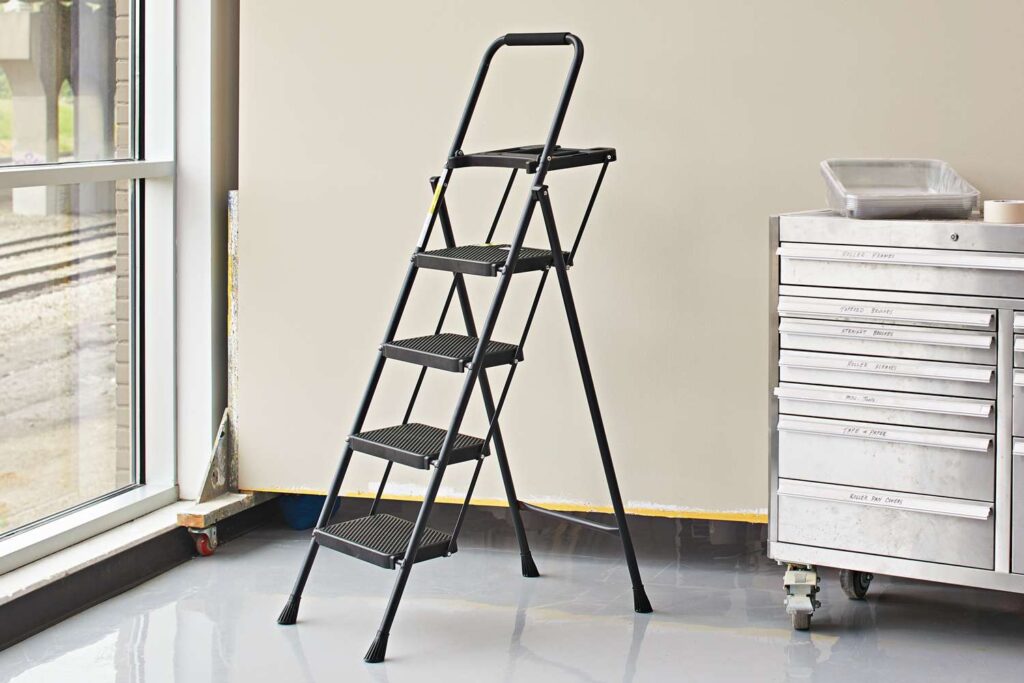
Finding the best step ladders
The steep staircase in the vertical climb is a different mission. In examining in the opposite amount of gentle, those ladder climbs require courage, skill and treatment although you must have a good height Steep staircases with sturdy materials made of cast iron or aluminum is difficult to prioritize unevenly over stability and security, ensuring that every step commands technical strength, willpower strikes and strength of character emerges
Conquering Heights with Confidence
A long way, although it has helped humanitarian efforts from the historical context and that steep ladder to really climb. Like a steep staircase, none of their emotions encourage an experience of struggle and accomplishment. With every step, those towers give us the confidence to rise above our anxieties and organize our courage and style.
Comparing Types of Step ladders: Materials, Features, and Applications
Types of steep ladders variety drastically to deal with various dreams and environments. Whether you’re a expert tradesperson, a domestic owner tackling DIY responsibilities, or a person attempting a ladder for occasional use, there may be a particular type designed to fulfill your necessities. Let’s discover some of the maximum commonplace sorts
- Aluminum Step Ladders:
- Material Composition: Typically made from lightweight aluminum alloys like 6061-T6.
- Key Features:
- Non-slip rubber feet for balance on several surfaces.
- Gravity and spring-operated mechanisms for easy extension and retraction.
- Internal publications for smooth segment connection and superior stability.
- Secure locking systems to prevent unintentional collapses.
- Durable, corrosion-resistant houses suitable for indoor and out of doors use.
- Ideal for a circle of relatives obligations, mild construction, and DIY responsibilities due to their mild-weight nature.
- Fiberglass Stepladders:
- Material Composition: Constructed from polystyrene resin reinforced with fiberglass.
- Key Features:
- Similar design features to aluminum ladders but with non-conductive properties, making them safe for electrical work.
- UV-resistant components for longevity in outdoor settings.
- Heavier than aluminum but offer superior strength and durability.
- Suitable for environments where electrical hazards are a concern.
- Resistant to corrosive substances, enhancing durability in challenging conditions.
- Steel Stepladders:
- Material Composition: Heavy-duty steel construction.
- Key Features:
- Exceptional load-bearing capacity suitable for heavy-duty industrial applications.
- Reinforced components and robust locking mechanisms for added safety.
- Anti-slip rubber feet for stability on various surfaces.
- Designed for rugged construction and tasks requiring extra stability and support.
- Heavier than aluminum or fiberglass ladders but provide unmatched strength and durability.
- Carbon Fiber Stepladders:
- Material Composition: Advanced carbon fiber composites.
- Key Features:
- Unique combination of lightweight construction and exceptional strength.
- Non-conductive properties suitable for electrical work.
- Highly resistant to corrosion and fatigue, making them ideal for demanding environments.
- Equipped with non-slip rungs and feet for secure footing.
- Ideal for professionals needing maximum performance and portability.
Type of steep in a steep ladder
Step ladders are available in various configurations, each tailored to specific heights and tasks:
- Single Step Ladders: Compact and lightweight, perfect for reaching low heights such as countertops or cabinets.
- Double Step Ladders: Provide two platforms for extended reach, suitable for tasks like painting or changing light bulbs.
- Multi-Position Ladders: Adjustable and versatile, serving as step ladders, extension ladders, or scaffolding, ideal for a wide range of projects.
- Podium Ladders: Feature large, enclosed platforms and handrails for exceptional stability and comfort during longer work periods.
- Folding Step Ladders: Compact and portable, designed for easy storage and transportation in limited spaces.
Types of ladders vary based on their features:
- Adjustable Ladders: These ladders have extendable legs to adapt to uneven surfaces, making them perfect for environments with varying heights like stairs and ramps.
- Folding Ladders (Articulated): Also known as articulated ladders, these can be extended by locking articulated sections. They are highly versatile, usable not just vertically but also configured into different shapes.
Each type of steep ladder offers unique advantages tailored to specific tasks and environments. Whether you prioritize lightweight portability, heavy-duty strength, or specialized safety features, there’s a ladder type designed to meet your needs effectively. When choosing a ladder, consider factors such as material composition, safety features, load-bearing capacity, and intended use to ensure you select the right tool for the job.
Where are Step Ladders Used?
Step ladders find indispensable use in a variety of settings due to their practical design and versatility. Here are some common places and scenarios where step ladders are essential:
- Home Maintenance and Repair: In households, step ladders are frequently used for tasks such as changing light bulbs, reaching high shelves, painting walls or ceilings, and performing minor repairs. Their compact size and portability make them convenient for indoor use.
- Commercial and Retail Environments: Stores and retail outlets often utilize step ladders for stocking shelves, arranging displays, and accessing inventory stored at higher levels. Their mobility and ease of use contribute to efficient operations in these settings.
- Construction and Renovation Sites: Step ladders are integral to construction sites for various tasks where elevation is required but not at extreme heights. They provide stable platforms for workers to perform tasks like installation, finishing work, and general maintenance.
- Industrial Settings: Industries rely on step ladders for maintenance tasks on equipment, machinery, and overhead structures. They are essential for accessing elevated areas safely in manufacturing plants, warehouses, and industrial facilities.
- Outdoor Maintenance: Gardeners, landscapers, and outdoor maintenance crews use step ladders for pruning trees, trimming hedges, and maintaining outdoor fixtures like lights and signage. Weather-resistant materials ensure durability in outdoor environments.
- Events and Venue Management: Step ladders play a role in event management for setting up stages, lighting, and decorations. They are also useful in venues for maintenance tasks and adjusting equipment or fixtures.
- Emergency and Rescue Operations: Emergency responders use specialized step ladders for accessing elevated areas during rescue missions or firefighting operations where conventional ladders may not be suitable or accessible.
- Educational Institutions: Schools, colleges, and universities utilize step ladders for maintenance tasks, classroom setup, and facilities management. They are indispensable tools for custodial staff and maintenance crews.
Overall, step ladders are versatile tools that facilitate safe and efficient access to heights across various industries and applications. Their design features, such as stability, portability, and ease of use, make them indispensable in both professional and personal environments where elevated access is needed.
Choosing the best step ladders: Finding Your Perfect Fit
Step ladders are essential tools for a variety of tasks around the home, from changing light bulbs to reaching high shelves. Selecting the right step ladder involves considering several key factors to ensure safety, comfort, and efficiency in your projects. Here’s a guide to help you find your perfect fit:
1. Height Requirement:
- Determine the maximum height you need to reach. Step ladders come in various heights, typically ranging from 4 feet to 12 feet or more. Choose a ladder tall enough to comfortably reach your intended work area without overreaching, which can compromise safety.
2. Type of Material:
- Step ladders are commonly made from aluminum, fiberglass, or steel. Each material has its advantages:
- Aluminum: Lightweight and corrosion-resistant, ideal for indoor and light outdoor use.
- Fiberglass: Non-conductive, suitable for electrical work or outdoor use where moisture is present.
- Steel: Extremely durable and suitable for heavy-duty applications, but heavier to transport.
3. Type of Step Ladder:
- Platform vs. Traditional: Decide whether you need a platform step ladder (with a larger standing platform) or a traditional step ladder (with smaller steps). Platform ladders provide more stability and space to work but are bulkier.
- Dual Purpose: Some step ladders can convert into straight ladders for additional versatility.
4. Weight Capacity:
- Check the ladder’s weight capacity to ensure it can safely support your weight along with any tools or materials you may need to carry. Most step ladders have weight ratings clearly marked, ranging from 200 lbs to over 300 lbs.
5. Size and Storage:
- Consider the ladder’s size when extended and its storage dimensions when folded. Compact folding step ladders are easier to store in closets, garages, or vehicles, while larger models may require more space.
6. Safety Features:
- Look for safety features such as:
- Non-slip steps and feet to provide stability.
- Locking mechanisms to keep the ladder securely open during use.
- Handrails or top steps with a built-in platform for added stability and comfort.
7. Additional Features:
- Some step ladders come with trays or tool holders for convenience.
- Look for ergonomic features like padded handles for comfort during extended use.
8. Stability and Durability:
- Inspect the ladder for stability. Choose models with wide steps and a stable base.
- Check reviews and ratings to gauge the ladder’s durability and reliability over time
9. Portability and Maneuverability:
- If you need to move the ladder frequently, consider its weight and the presence of features like wheels or handles for easier transport.
10. Certification and Standards:
- Ensure the ladder complies with relevant safety standards such as ANSI (American National Standards Institute) or OSHA (Occupational Safety and Health Administration) regulations, especially for workplace use.
11.Budget Considerations:
- Set a budget and compare options within that range. Consider the ladder’s quality and features relative to its price.
12. Reviews and Recommendations:
- Read customer reviews and seek recommendations from friends, colleagues, or professionals who have experience with different ladder models. Their insights can provide valuable information on durability, ease of use, and overall satisfaction.
13. User Comfort:
- Consider your own comfort preferences, such as handle grips and step design, to ensure ease of use.
14. Warranty and Customer Support:
- Check the warranty offered by the manufacturer. Good customer support can be invaluable if you have questions or need assistance with your ladder.
Choosing the right step ladder involves balancing your specific needs with safety and usability considerations. By carefully assessing these factors, you can find a step ladder that enhances your efficiency and safety while tackling various tasks around your home or workplace.
Recommendations for the correct use of the step ladders
Using a step ladder safely is essential to prevent accidents and injuries. Whether at home, in the workplace, or on a construction site, following these guidelines will help ensure you use a step ladder correctly:
1. Choose the Right Type and Size:
- Select a step ladder that is appropriate for the task at hand. Consider the height you need to reach and choose a ladder with a height that exceeds this requirement to ensure safety.
- Ensure the ladder is in good condition with no visible damage or defects.
2. Inspect Before Use:
- Before stepping onto the ladder, inspect it thoroughly. Check for any cracks, loose screws, or damaged steps.
- Verify that the spreaders (the bars that keep the ladder open) are locked securely in place.
3. Set Up on Stable Ground:
- Place the step ladder on a flat, level surface. Avoid uneven ground or surfaces that could cause the ladder to wobble.
- If you’re working outdoors, use a ladder with non-slip feet or add stabilizers to prevent slipping.
4. Maintain Three Points of Contact:
- When climbing the ladder, maintain three points of contact at all times. This means either two hands and one foot or two feet and one hand should be on the ladder at all times.
- Never carry heavy or bulky items while climbing. Use a tool belt or hoist to transport materials safely.
5. Don’t Overreach:
- Keep your body centered between the side rails of the ladder. Avoid leaning too far to one side or reaching too far to the side or overhead, as this can cause the ladder to tip over.
6. Use as Intended:
- Do not use a step ladder as a straight ladder by leaning it against a wall or other surface. Step ladders are designed for standing on the steps, not the top or the rear frame.
7. Descend Carefully:
- When descending, face the ladder and use the same three-point contact rule. Descend step by step rather than jumping off.
8. Store Properly:
- Store the step ladder in a dry place when not in use. Avoid leaving it outdoors where it can be exposed to the elements.
Retracting the Step Ladders
Retracting a step ladder safely is just as important as using it correctly:
- Follow the Manufacturer’s Instructions: Each ladder may have specific instructions for retracting. Follow these carefully.
- Slow and Controlled Movement: Retract the ladder slowly and in a controlled manner to avoid trapping fingers or causing the ladder to collapse unexpectedly.
- Ensure All Locks Engage: Before moving the ladder, make sure all locks and hinges are securely engaged to prevent accidental folding.
How to use steep ladder
Before Use:
- Inspect the Ladder:
- Check for any signs of damage such as cracks, bent rungs, or loose parts.
- Ensure all hinges, locks, and spreaders are in good working condition.
- Choose the Right Location:
- Place the ladder on a stable, level surface.
- Avoid slippery or uneven ground that could cause the ladder to shift.
- Adjust the Angle:
- Position the ladder at approximately a 75-degree angle against the surface it will lean on.
- This angle provides stability and prevents the ladder from slipping backward.
- Secure the Top and Bottom:
- Use ladder stabilizers if available to secure the top against the surface.
- Ensure the ladder’s feet are on solid ground and won’t slip.
- Prepare Your Work Area:
- Clear the area around and beneath the ladder of any obstacles or hazards.
- Make sure there is enough space to move safely while on the ladder.
During Use:
- Maintain Three Points of Contact:
- Always have two hands and one foot, or two feet and one hand, securely on the ladder.
- Keep your body centered between the ladder’s side rails.
- Ascend and Descend Carefully:
- Climb the ladder slowly and deliberately, facing the ladder and gripping the rungs firmly.
- Use the ladder one step at a time, avoiding skipping rungs or making sudden movements.
- Keep Your Body Centered:
- Avoid leaning too far to either side. Keep your body centered to maintain balance.
- Do Not Overreach:
- Reposition the ladder if you can’t reach your work comfortably.
- Overreaching can cause the ladder to become unstable and increase the risk of falling.
- Use the Right Type of Ladder:
- Choose a ladder appropriate for the task. Stepladders are suitable for lower heights, while extension ladders are better for reaching higher places.
- Be Aware of Electrical Hazards:
- Use a non-conductive ladder (e.g., fiberglass) if working near electricity to prevent electric shock.
This revised version clarifies the types of ladders and provides concise safety guidelines for using a stepladder effectively.
Following these steps will help you use a steep ladder safely and effectively for various tasks. Always prioritize safety and take precautions to minimize the risk of accidents or injuries.
Remember to have proper maintenance
Maintaining equipment and tools is crucial for their longevity, efficiency, and, most importantly, safety. This principle applies to everything from vehicles and machinery to household appliances and even personal devices. Proper maintenance not only extends the life of these items but also ensures they operate safely and effectively. Here are key reasons why maintenance matters and some practical tips to help you stay on top of it:
Importance of Maintenance:
- Safety: Regular maintenance helps identify and rectify potential hazards or malfunctions before they escalate into safety risks. This is particularly critical for equipment used in hazardous environments or heavy machinery.
- Reliability: Well-maintained equipment is less likely to break down unexpectedly, leading to fewer disruptions in operations or daily activities. This reliability is essential for both productivity and convenience.
- Cost Efficiency: While maintenance incurs some upfront costs, it is far more economical than repairing or replacing equipment that has been neglected and suffered significant damage.
- Optimal Performance: Properly maintained equipment performs at its best, providing optimal efficiency and performance. This is especially important for achieving desired outcomes in tasks and projects.
Practical Maintenance Tips:
- Follow Manufacturer’s Guidelines: Each piece of equipment comes with specific maintenance instructions from the manufacturer. Follow these guidelines meticulously to ensure you’re caring for your equipment correctly.
- Regular Inspections: Implement a schedule for routine inspections. Check for wear and tear, loose parts, leaks, or any signs of deterioration. Early detection of issues allows for timely repairs.
- Cleanliness: Keep equipment clean and free of dirt, debris, and contaminants. Clean filters, lubricate moving parts, and ensure ventilation systems are clear to maintain optimal functioning.
- Replace Parts as Needed: Pay attention to the condition of consumable parts like filters, belts, and hoses. Replace them according to the manufacturer’s recommendations or sooner if they show signs of wear.
- Store Properly: When equipment is not in use, store it in a suitable environment. Protect it from extreme temperatures, humidity, and other environmental factors that could cause damage.
- Train and Educate Users: Ensure that those operating equipment are trained in its proper use and maintenance. Encourage them to report any issues promptly to prevent small problems from becoming larger ones.
- Document Maintenance Activities: Keep records of maintenance activities, including inspections, repairs, and replacements. This documentation helps track the history of the equipment and informs future maintenance needs.
- Seek Professional Help: For complex equipment or tasks beyond your expertise, consult with qualified professionals or service technicians. They can provide specialized maintenance services and ensure compliance with safety standards.
By prioritizing maintenance, you not only protect your investment but also contribute to a safer and more efficient environment. Remember, proactive maintenance is key to preventing costly repairs, minimizing downtime, and maximizing the lifespan and performance of your equipment. Treat maintenance as an investment in reliability and safety, and it will pay dividends in the long run.
Some Tips to Ensure Your Safety on step Ladder
Using a step ladder safely is paramount to preventing accidents and injuries. Whether you’re using it for household chores, maintenance tasks, or construction work, here are some essential tips to keep in mind:
1. Choose the Right Ladder:
- Select a step ladder that is appropriate for the height you need to reach. Ensure it has a weight capacity that exceeds your own weight and the weight of any tools or materials you’ll be using.
2. Inspect Before Use:
- Before stepping onto the ladder, inspect it thoroughly. Check for any cracks, loose screws, or damaged steps. Ensure that all hinges and locks are in proper working condition.
3. Set Up Properly:
- Place the ladder on a stable, level surface. Avoid slippery or uneven ground that could cause the ladder to wobble or tip over.
- If necessary, use leg levelers or a ladder stabilizer to ensure stability on uneven surfaces.
4. Maintain Three Points of Contact:
- When climbing the ladder, always maintain three points of contact — two hands and one foot or two feet and one hand should be on the ladder at all times.
- Never lean too far to one side or overreach. Reposition the ladder as needed to maintain your balance and stability.
5. Face the Ladder:
- Always face the ladder while climbing up or down. Avoid twisting your body or reaching too far to the side, as this can lead to loss of balance.
6. Don’t Overload:
- Respect the weight limit of the ladder and avoid carrying heavy or bulky items while climbing. Use a tool belt or hoist to transport materials safely.
7. Use on Firm Ground:
- Do not use a step ladder on unstable surfaces such as scaffolding or other makeshift supports. The ladder should always be positioned on a firm, secure foundation.
8. Descend Carefully:
- When descending, take it one step at a time. Face the ladder and maintain three points of contact until both feet are securely on the ground.
9. Store Properly:
- Store the step ladder in a dry place when not in use. Keep it away from moisture and extreme temperatures that could weaken its structure over time.
10. Training and Awareness:
- Ensure that anyone using the step ladder is trained in ladder safety practices. Educate them about potential hazards and the importance of following safety guidelines.
By following these tips, you can significantly reduce the risk of accidents while using a step ladder. Remember, safety should always be your priority when working at heights or performing tasks that require the use of a ladder.
Advantages of Step Ladders: Reaching Higher with Confidence
Step ladders are essential tools known for their versatility and safety features, making them a preferred choice for a wide range of tasks in both residential and commercial settings. Here are several key advantages of using step ladders:
- Stability and Safety: Step ladders are designed with wide, stable bases and non-slip feet, providing a secure platform for users to stand on. This stability is crucial for tasks requiring balance and confidence at various heights.
- Versatility: Different types of step ladders cater to specific needs. Single step ladders are perfect for quick tasks at low heights, while multi-position ladders offer adjustable configurations for different types of projects, from painting to electrical work.
- Portability and Maneuverability: Step ladders are lightweight and portable, allowing easy transportation between locations and maneuvering within confined spaces. This mobility enhances efficiency and convenience during tasks.
- Ease of Storage: Many step ladders are designed to fold compactly, making them easy to store in closets, garages, or utility rooms. This feature is particularly advantageous for homeowners or businesses with limited storage space.
- Durability: Constructed from materials such as aluminum, fiberglass, or steel, step ladders are built to withstand regular use and various environmental conditions. They are resistant to rust, corrosion, and wear, ensuring long-term reliability.
- Accessibility: Step ladders provide safe access to heights that may be impractical or unsafe to reach with other types of equipment. They enable users to perform tasks independently and efficiently without the need for extensive setup.
- Cost-Effectiveness: Compared to other types of elevated platforms or scaffolding, step ladders are typically more affordable and accessible for everyday use. They offer a cost-effective solution for routine maintenance, repairs, and DIY projects.
- Enhanced Work Efficiency: By providing a stable platform at heights, step ladders help streamline workflows and improve productivity in both professional and personal environments. Tasks can be completed more efficiently and with greater confidence.
Overall, the advantages of step ladders lie in their practical design, safety features, and versatility, empowering users to work at heights with confidence and efficiency. Whether used for household chores, construction projects, or maintenance tasks, step ladders remain indispensable tools for reaching higher and accomplishing tasks effectively.
Disadvantages to Consider a step ladder
While step ladders offer numerous benefits, there are also some disadvantages to consider:
- Limited Reach: Step ladders are typically designed for reaching moderate heights. For tasks requiring access to very high places or extended reach, alternative equipment like extension ladders or scaffolding may be more suitable.
- Space Requirements: Although foldable, step ladders still require adequate space for storage, especially larger models or those with multiple steps. This can be a consideration in environments where storage space is limited.
- Weight Limitations: Each step ladder has a maximum weight capacity that users must adhere to. Exceeding this limit can compromise stability and safety, potentially leading to accidents or damage to the ladder.
- Not Suitable for All Terrain: Step ladders are primarily designed for flat and stable surfaces. They may not be suitable for use on uneven ground, soft soil, or outdoor conditions where stability can be compromised.
- Single-User Limitation: Most step ladders are designed for use by a single person at a time. If a task requires multiple individuals working simultaneously at height, alternative solutions may be necessary.
- Occupational Safety Considerations: In professional settings, adherence to safety regulations and standards is crucial. Step ladders may not always meet specific safety requirements or certifications needed for certain industries or tasks.
- Potential for Overreaching: Users may be tempted to overreach while on a step ladder, which can lead to loss of balance or falling. Proper training and adherence to safety guidelines are essential to mitigate this risk.
- Skill and Experience Required: While step ladders are generally easy to use, some tasks may require specific skills or techniques to ensure safety and efficiency. Adequate training and familiarity with ladder use are important considerations.
Overall, while step ladders are versatile and useful tools for a variety of tasks, careful assessment of their limitations and adherence to safety guidelines are necessary to minimize risks and ensure safe use.
Conclusion:
The content about step ladders underscores their crucial role in ensuring safety and efficiency in various tasks requiring elevated access. From understanding the types and features of step ladders to emphasizing safety protocols such as proper usage and maintenance, this information serves as a comprehensive guide for both novices and experienced users. By highlighting the importance of selecting the right ladder for specific needs and environments, this content aims to reduce accidents and promote workplace safety. Ultimately, mastering the knowledge provided can significantly enhance productivity and minimize risks associated with working at heights, making step ladders indispensable tools in both professional and domestic settings.
Frequently Asked Questions about Steep Ladders
1. What defines a steep ladder? A steep ladder typically refers to a ladder with a high angle of inclination, often exceeding 70 degrees from the ground. These ladders are designed for use in confined spaces or where height needs to be reached quickly.
2. Are there safety concerns with steep ladders? Yes, steep ladders can pose increased safety risks compared to less steep ones. Users may find it harder to maintain balance and stability, especially when ascending or descending quickly.
3. What are some tips for using a steep ladder safely? Ensure the ladder is placed on a stable surface, use both hands to grip the ladder firmly, and avoid overreaching. Always maintain three points of contact (two hands and one foot or two feet and one hand) when climbing or descending.
4. What types of projects are suitable for steep ladders? Steep ladders are often used in construction, maintenance, and other tasks where a significant vertical reach is required in a small space. They are handy for accessing rooftops, attics, or areas with limited horizontal clearance.
5. How should one choose the right steep ladder? Consider the maximum height you need to reach, the weight capacity of the ladder, and the angle of inclination that best suits your workspace. Ensure the ladder meets safety standards and guidelines for your region.
6. Can steep ladders be used outdoors? Yes, but precautions must be taken to secure the ladder on stable ground and avoid using it in adverse weather conditions such as strong winds or rain.
7. What are some alternatives to steep ladders? Depending on the task, alternatives could include scaffoldings, aerial work platforms, or extension tools designed for specific heights and conditions.
8. How should one store and maintain a steep ladder? Store the ladder in a dry place away from moisture and inspect it regularly for any signs of wear or damage. Clean it as needed to remove dirt or debris that could affect its stability.
9. Are there specific regulations governing the use of steep ladders? Regulations vary by region, but generally, ladders should comply with safety standards such as those set by OSHA (Occupational Safety and Health Administration) in the United States or similar authorities in other countries.
10. What should I do if I encounter a problem with a steep ladder during use? Stop using the ladder immediately if you notice any defects, instability, or other issues. Report the problem to your supervisor or employer and do not attempt repairs unless trained to do so safely.
These FAQs provide a starting point for understanding the use and safety considerations of steep ladders, but always consult specific guidelines and regulations applicable to your location and workplace.


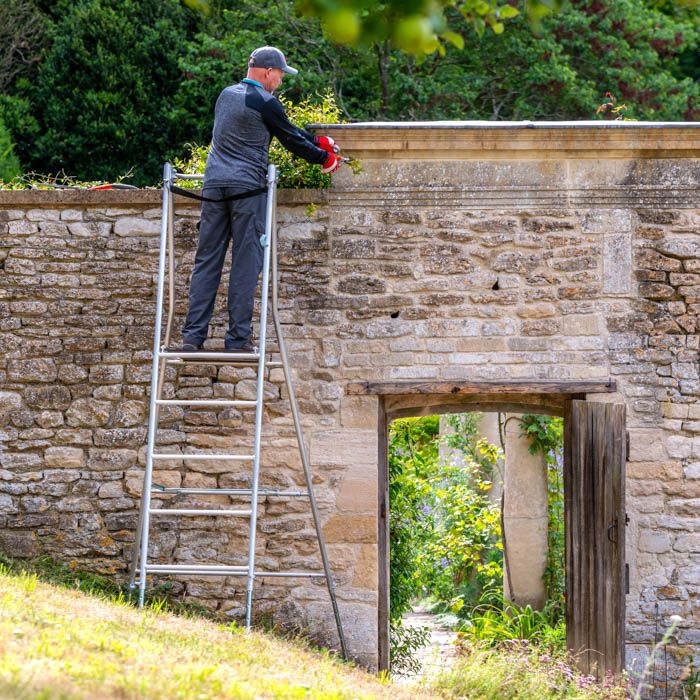
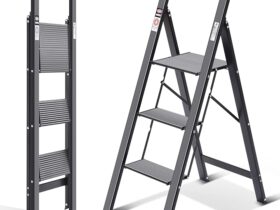
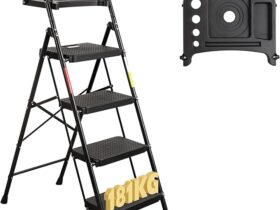
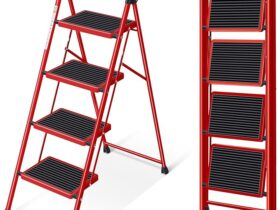
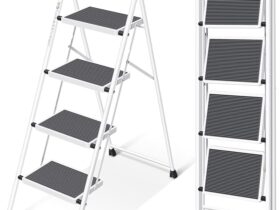
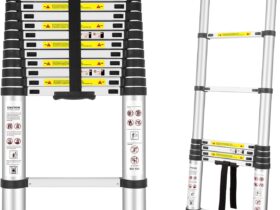
Leave a Reply
View Comments